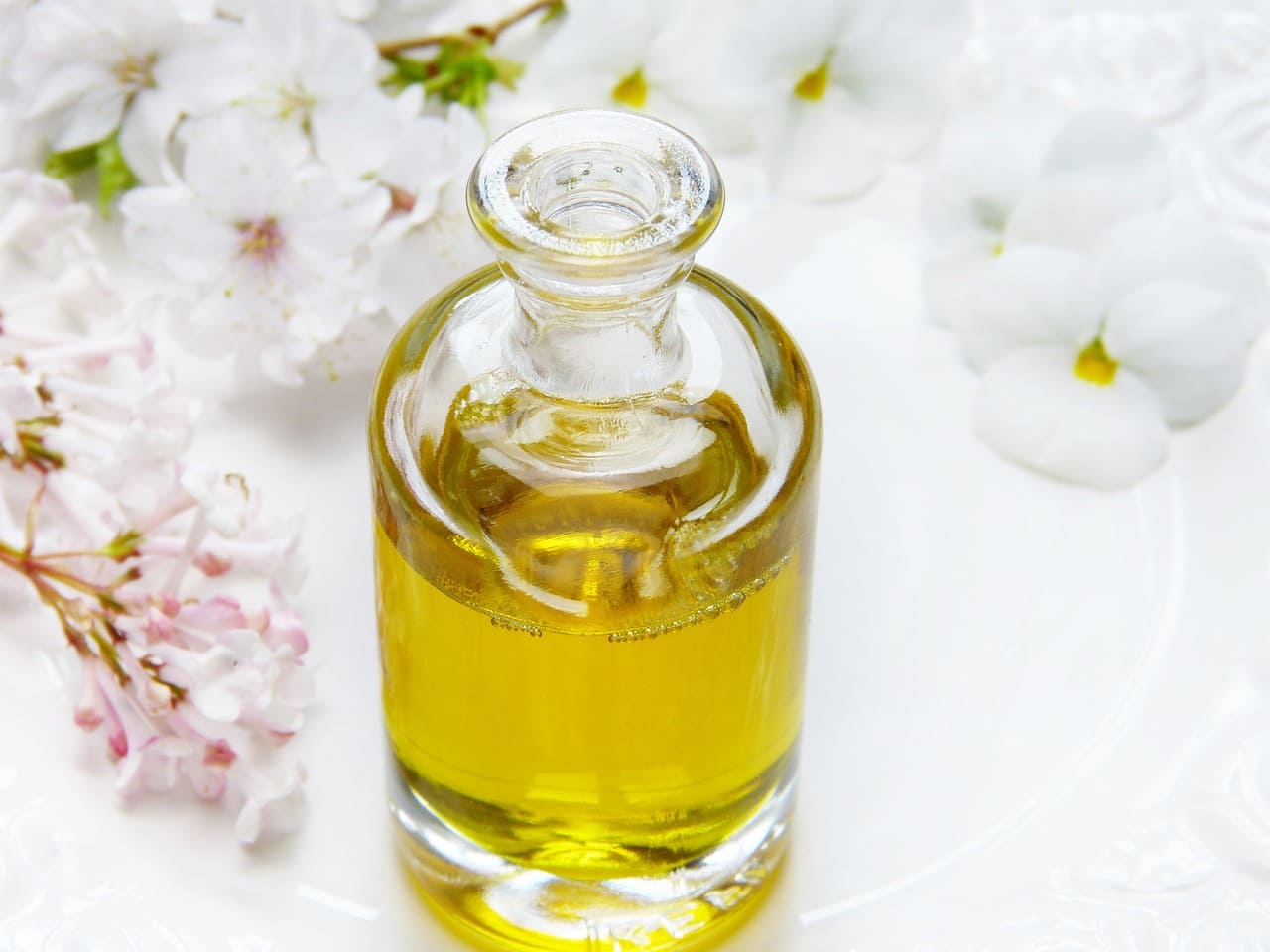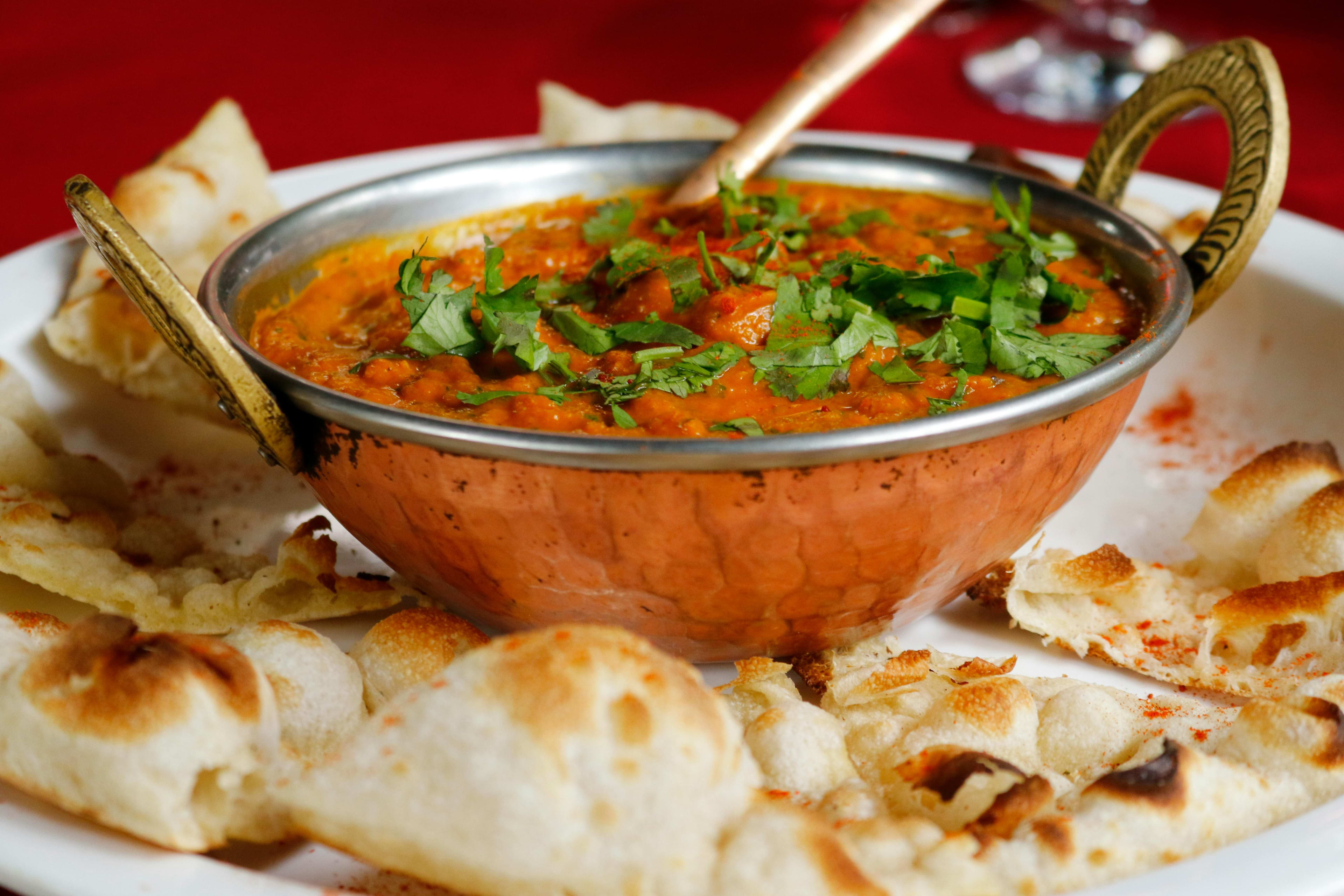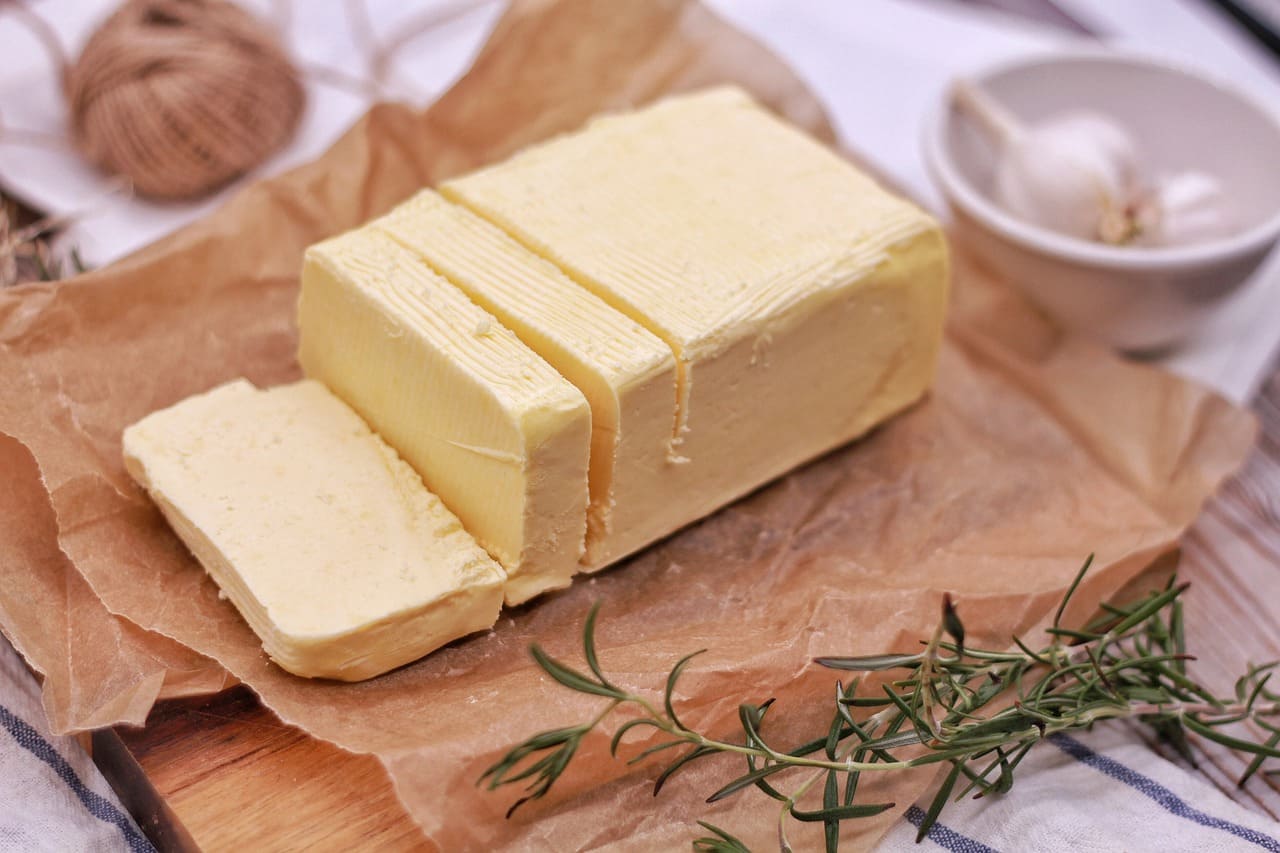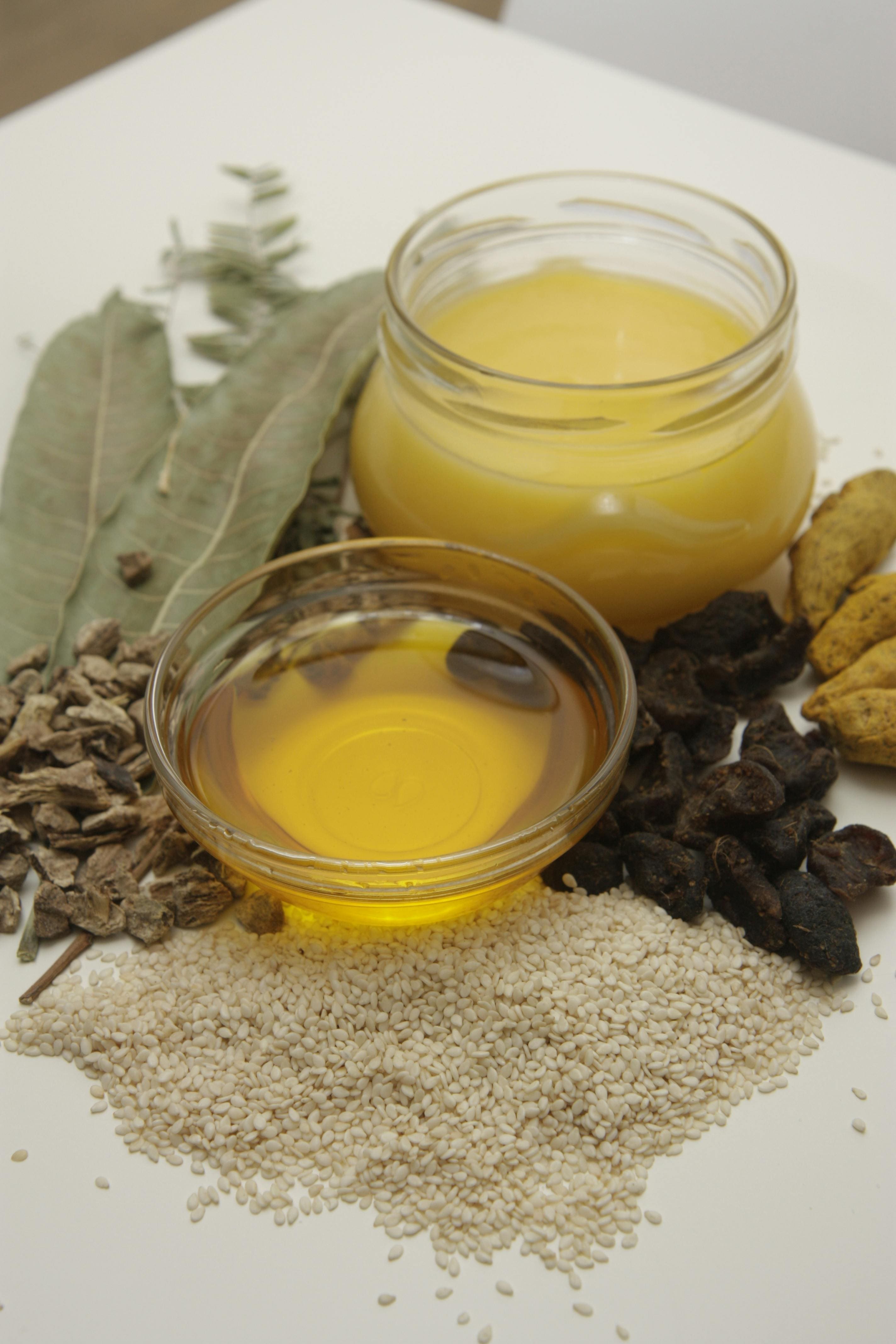What Is Ghee & How Does It Compare to Butter?
What Is Ghee & How Does It Compare to Butter?
Ever wondered what that golden glass jar labeled ‘ghee’ at the grocery store was all about? You’re not alone. While ghee and butter might sit side by side on the shelf, they bring some distinct vibes to the kitchen.
We’re diving into what sets these two apart. From whipping up creamy sauces to mastering the perfect sauté, knowing your fats can elevate your cooking game. Stick with us as we explore the tasty world of ghee and butter, and find out which one might just become your new favorite kitchen staple.

What Is Ghee?
Ghee, often celebrated in Indian and Ayurvedic cuisine, is essentially butter that's been cooked down to enhance its natural essence. During its making, butter is melted over low heat, which allows the water content to evaporate and milk solids to settle at the bottom.
The result? A pure, golden butterfat with a rich, nutty flavor that stands up to high cooking temperatures due to its high smoke point.
What Is Clarified Butter?
Now that you know what ghee is, let's talk about clarified butter. It's similar to ghee because it's also made by melting butter to separate the milk solids from the butterfat.
The big difference? Clarified butter is cooked just long enough to remove the water and milk solids but not so long that these solids brown. This gives clarified butter a milder flavor than the rich, nutty taste of ghee. It’s perfect for dishes where you want just a touch of butteriness without overpowering other delicate flavors.
How Is Ghee Made?
Place the butter chunks in a heavy-bottomed saucepan over medium-low heat. Let the butter melt slowly to prevent burning, a key step to ensure your ghee turns out perfect.
Once melted, lower the heat and let the butter simmer. You'll see foam forming—these are the milk solids separating from the fat. Keep an eye on the pot; this is where the magic happens.
As the butter simmers, skim off any foam that forms on the surface. This helps clarify the butterfat and is essential for achieving the golden purity of ghee.
Keep the butter on a low simmer until the milk solids at the bottom of the pan brown slightly—this is a must for that distinctive nutty flavor of ghee. The butter above should look clear and golden.
Pour the clear ghee into a jar and let it cool. Once solidified, seal it and store at room temperature. Ghee is shelf-stable and doesn’t need refrigeration.

What’s the Difference in Nutrition Between Ghee and Butter?
Now, let’s break down the nutritional showdown between ghee and traditional butter. If you’re trying to decide between ghee and butter for your kitchen, knowing their nutritional differences can help you make a savvy choice.Calories and Fat
Both ghee and butter are rich in fats, but ghee has a slight edge in fat content because it’s concentrated butterfat. That means ghee packs more calories in a smaller serving—something to think about if you're watching your caloric intake.
Goodbye, Lactose
One big win for ghee? It's practically free of lactose, whey, and casein. During its preparation, those milk solids are removed, making ghee a friendlier option for anyone with dairy sensitivities.
Vitamins Aplenty
Both butter and ghee shine when it comes to fat-soluble vitamins like vitamins A, E, and K2. However, ghee might just pip butter to the post with slightly higher levels of these nutrients, thanks to its concentrated form.
Cooking on High
Here’s a practical perk—ghee’s got a higher smoke point than butter. That means you can crank up the heat without worrying about it burning. Perfect for those high-heat dishes where you want to sear or sauté without the smoke alarm going off.
How Do Ghee and Butter Taste?
Ghee has a toasted, nutty flavor that stands out—thanks to the caramelization of milk solids during cooking. It’s a popular choice in Indian, Middle Eastern, and Asian cuisines where rich, bold flavors are key. Because ghee is lactose-free, it’s often friendlier for those with lactose intolerance and brings a unique depth to dishes like naan, curries, and lentils.
Butter, on the other hand, has a familiar, creamy taste that’s great for everyday cooking. With a softer, less intense flavor, it’s ideal for Western dishes like French sauces, baked goods, and comforting American classics. The slight sweetness of butter enhances flavors without overpowering them, making it a go-to for everything from pastries to pasta sauces.
Both have their strong points: ghee’s high smoke point makes it ideal for sautéing, frying, and high-heat cooking, while butter’s mild flavor is perfect for lower-heat cooking and baking. So, whether you’re after a nutty, robust taste or a subtle, creamy texture, both butter and ghee bring something unique to the table—literally.
How Can You Use Ghee in Your Cooking?
Ghee’s high smoke point means you can turn up the heat without burning your food. It’s perfect for frying eggs, searing meats, or stir-frying veggies.
Add Flavor
Ghee brings a rich, nutty flavor that’s great for finishing soups, tossing with steamed veggies, or drizzling over popcorn. Just a spoonful goes a long way.
Use in Baking
Swap ghee for butter in your baking recipes—it adds a deeper flavor and works well in cookies, muffins, and even pie crusts.
Friendly for Sensitive Stomachs
Since ghee doesn’t have lactose, it’s an easy butter swap for anyone with dairy issues. Add it wherever you’d normally use butter.
Stir Into Coffee or Tea
Blend a spoonful of ghee into your coffee or tea for a creamy texture. This is a popular choice for keto fans or anyone looking for an extra energy boost.

How Does Ghee Compare to Grass-Fed Butter?
So, you know about ghee, but what's the deal with grass-fed butter? Both are dairy products, but they play different roles in the kitchen.
Grass-fed butter boasts a rich taste and higher levels of omega-3 fatty acids and vitamins because the cow’s milk that’s used to produce it comes from livestock that munches on grass instead of grain. It's creamier and can give a flavor boost to anything from toast to steaks.
Ghee, with its milk solids removed, can handle the heat better—great for when you want to fry or sauté without smoking out your kitchen. Depending on your taste or if you're avoiding dairy sensitivities, one might suit you better than the other.

How Does Ghee Compare to Other Cooking Oils?
Ghee stands out in the kitchen, but how does it stack up against other common cooking oils?
Here’s a quick look:
- Olive oil: Known for its heart-healthy fats, olive oil has a lower smoke point, making it best for medium-heat cooking, like sautéing or salad dressings.
- Vegetable oils: Widely used for frying and baking, vegetable oils have a neutral flavor but lack the high nutritional profile of ghee.
- Coconut oil: With a mild coconut flavor and high saturated fat, coconut oil works well for baking but has a lower smoke point than ghee.
- Avocado oil: High in monounsaturated fats, avocado oil has a high smoke point similar to ghee and a subtle, buttery flavor, great for both high-heat cooking and dressings.
- Canola oil: A neutral option often used for frying, but it lacks the rich flavor and nutrients you’d get with ghee.
In short, ghee offers a combination of a high smoke point, shelf stability, and deep flavor, making it an excellent choice for everything from frying to flavor-boosting.